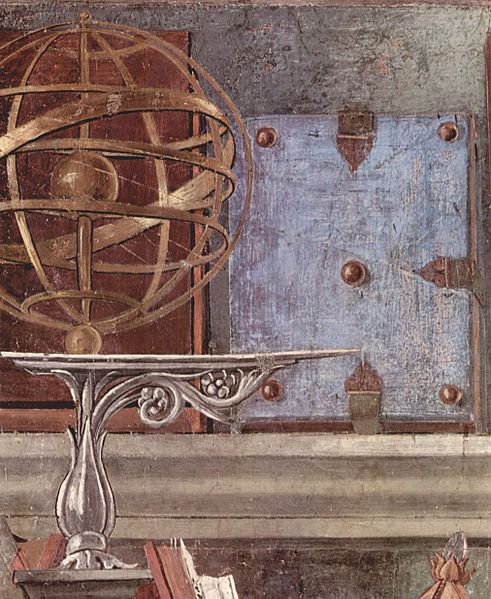Pope Sylvester II, originally known as Gerbert of Aurillac, was a scholar and teacher who served as the bishop of Rome and ruled the Papal States from 999 to his death. He endorsed and promoted study of Moorish and Greco-Roman arithmetic, mathematics and astronomy, reintroducing to Western Christendom the abacus, armillary sphere, and water organ, which had been lost to Latin Europe since the fall of the Western Roman Empire. He is said to be the first in Christian Europe to introduce the decimal numeral system using the Hindu-Arabic numeral system.
Sylvester, in blue, as depicted in the Gospels of Otto III
An armillary sphere in a painting by Sandro Botticelli, c. 1480
Seal of Sylvester II
Statue of Pope Sylvester II in Aurillac, France
An abacus, also called a counting frame, is a hand-operated calculating tool which was used from ancient times in the ancient Near East, Europe, China, and Russia, until the adoption of the Arabic numeral system. An abacus consists of a two-dimensional array of slidable beads. In their earliest designs, the beads could be loose on a flat surface or sliding in grooves. Later the beads were made to slide on rods and built into a frame, allowing faster manipulation.
An early photograph of the Salamis Tablet, 1899. The original is marble and is held by the National Museum of Epigraphy, in Athens.
Copy of a Roman abacus
Russian schoty
Early 20th century abacus used in Danish elementary school.








